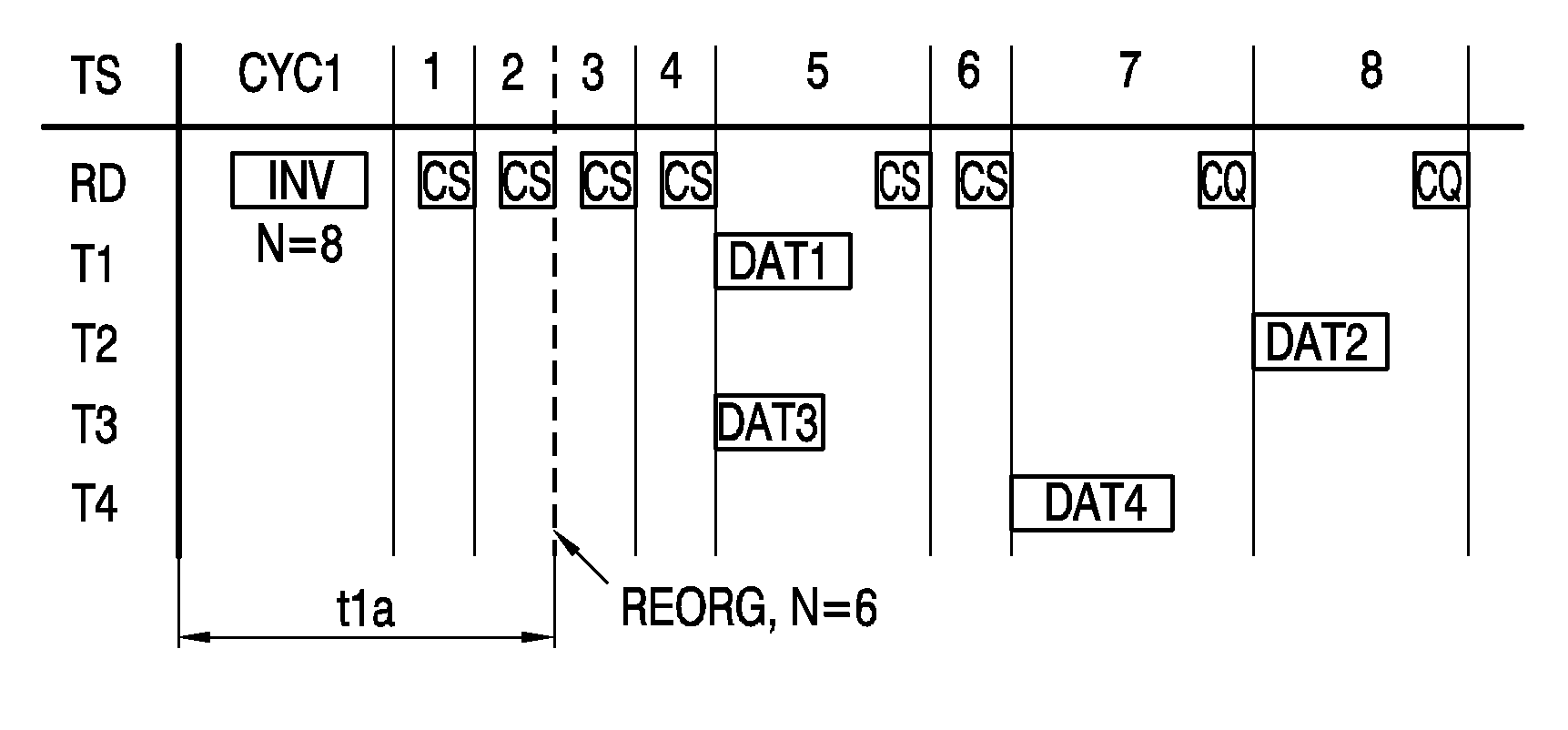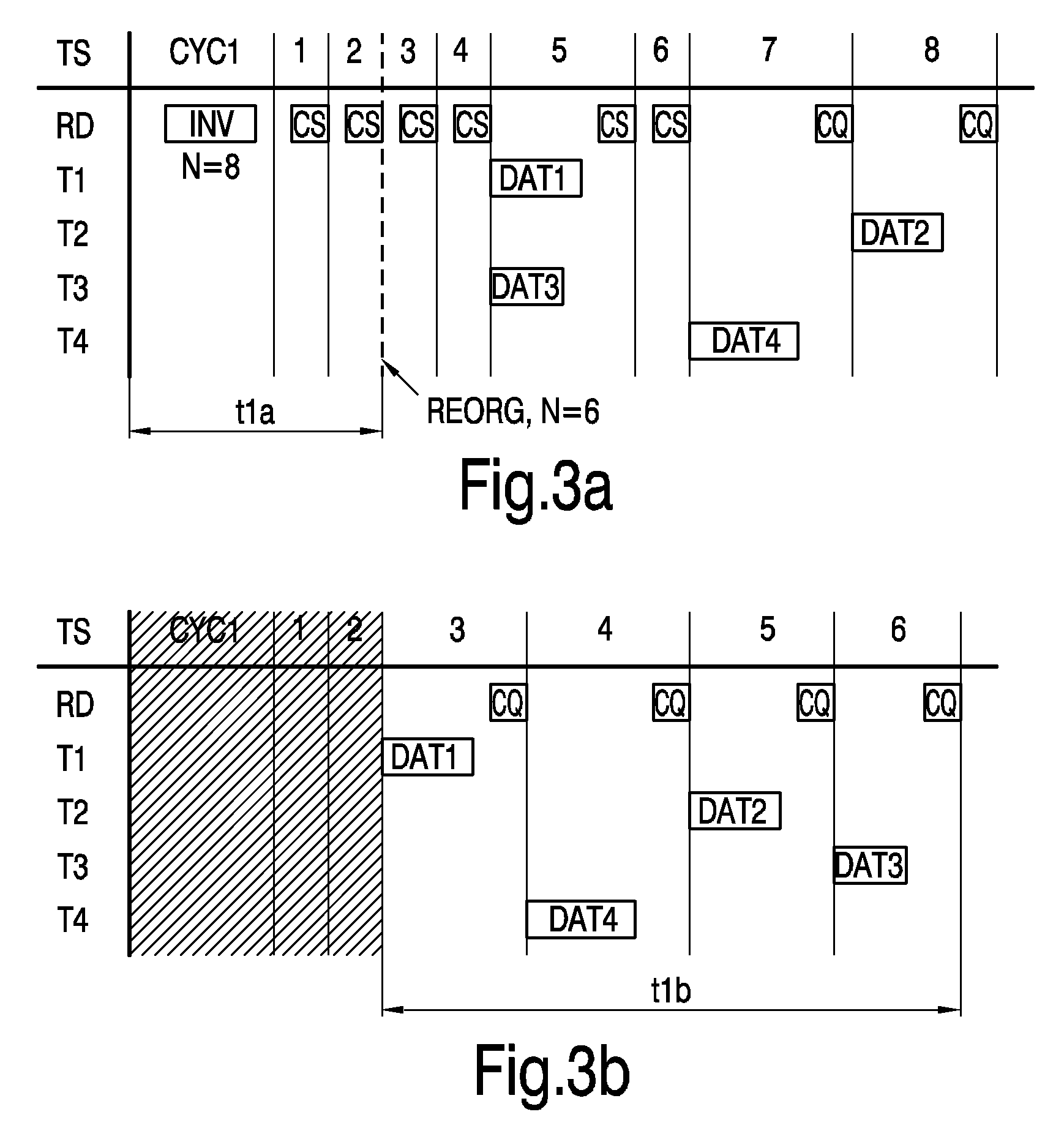Method of Reading Data From Transponders Through a Reader, a Transponder, and a Reader
a transponder and data technology, applied in the field of reading data from transponders through readers, transponders, and readers, can solve the problems of inability of the device rd to distinguish between the data streams, inability to read data correctly, and long running time of the read procedure, so as to reduce the risk of data collision, increase the probability, and reduce the probability
- Summary
- Abstract
- Description
- Claims
- Application Information
AI Technical Summary
Benefits of technology
Problems solved by technology
Method used
Image
Examples
Embodiment Construction
[0067]FIG. 3a again shows a timing diagram for a read procedure of a reader device RD and four transponders T1 . . . T4. The commands are the same as in FIGS. 2a and 2b, so a detailed explanation of the consequences of each command is omitted for the sake of brevity.
[0068]Eight timeslots TS are again reserved for sending data DAT1 . . . DAT4 from the transponders T1 . . . T4 back to the reader device RD. Hence, the read command INV is sent out with N=8. Each transponder T1 . . . T4 again chooses one of the eight time slots T1 . . . T8, resulting in the planning as shown in FIG. 3a. Again a couple of empty time slots TS are part of the read sequence CYC1, characterized by subsequent close slot commands, each interrupted by a short waiting time. In contrast to the procedure shown in FIGS. 2a and 2b, here each transponders T1 . . . T4 observes the seizure of the time slots TS1 . . . TS4 by other transponders T1 . . . T4, i.e. for example, the first transponder T1 observes the seizure o...
PUM
 Login to View More
Login to View More Abstract
Description
Claims
Application Information
 Login to View More
Login to View More - R&D
- Intellectual Property
- Life Sciences
- Materials
- Tech Scout
- Unparalleled Data Quality
- Higher Quality Content
- 60% Fewer Hallucinations
Browse by: Latest US Patents, China's latest patents, Technical Efficacy Thesaurus, Application Domain, Technology Topic, Popular Technical Reports.
© 2025 PatSnap. All rights reserved.Legal|Privacy policy|Modern Slavery Act Transparency Statement|Sitemap|About US| Contact US: help@patsnap.com



